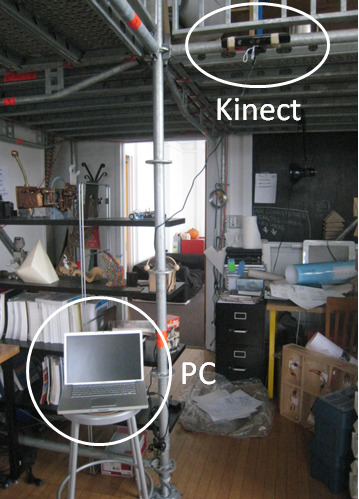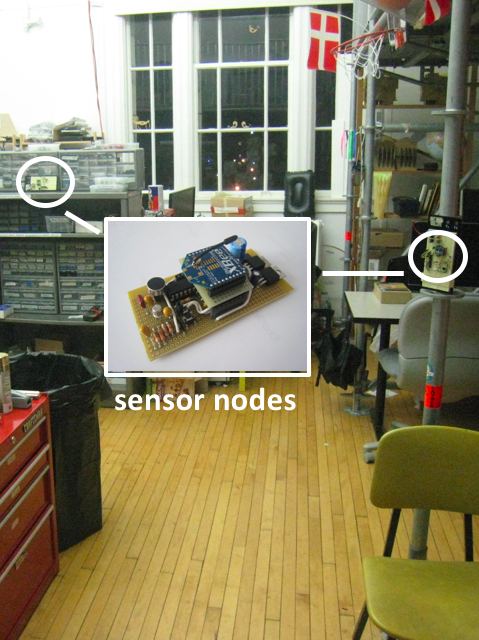Sensor Networked Snap Interface
December, 2012What if we can manipulate the things around us with just a finger snap? Computationally programmed interactive spatial design has been studied, but the difficulty lies in recognizing solely the user's instructions. Using a display or a voice recognition are few of the solutions, but not as elegant and simple as a finger snap.
SNAP aims to integrate robotic sensing technologies and wireless sensor networks into a living space to enable an elegant interaction and an animated experience with the space.
Wireless sensing modules and sensor networking architecture are prototyped to demonstrate that only the module closest to the user will respond and the system can distinguish the snap from recognizing other similar sounds.
While numerous modules are embedded into the living space to catch the pulse of a finger snap, the central computing platform works on image processing, gesture tracking, and communicating with the sensor modules. Depending on where the users locate the modules, the 'hot spots' can be customized.
Relying solely on sound amplitude and frequency information is not enough for classifying the various sound waves of extremely short pulse. SNAP made it possible to distinguish a finger snap from recognizing other similar wave patterns by combining image information. By having gesture tracking as the 'key' to activate the sensor modules, the signal processing becomes much simpler, and the overall reliability improves dramatically.


In this prototype, XBee module and Zigbee wireless protocol are used for the sensor networking due to the module's cost performance and its functionality. An important note is that instead of sending all the analog signals from the sensor modules, the signals are filtered (bandwidth 20Hz - 10kHz), amplified, and processed in each node, and sends back a 2-bit signal only when the snap is detected. In this case the amount of computation at the central unit and the network traffic can be minimized.
Hardware and network overview:

Wireless sensing module:
© 2018 Daiki Itoh